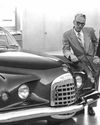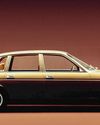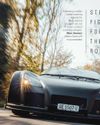
'The 250F was without a doubt the finest-handling front-engine F1 car I think built by anybody. My best race, I suppose, was probably winning Monaco in 1956. The reason was, the car handled so well. It was not as fast as the Ferraris but the balance of the machine was very, very important and they got it pretty right.’ These are the words of Stirling Moss, about a very special Maserati.
As the world emerged from war in the late 1940s, attention in Europe returned to motor racing. In 1950, the Fédération Internationale de l’Automobile (FIA) introduced the Formula 1 World Championship and, while entries came from several European countries, the fields were dominated initially by entries from three teams of Northern Italy: Maserati (Modena), Ferrari (Maranello), and Alfa Romeo (Milan).
Alfa Romeo used its pre-war Tipo 158/9 to dominate in 1950 and 1951 but, realising that the Alfetta would need to be completely redesigned to remain competitive, announced its withdrawal from racing in 1952. Fearing loss of revenue due to the perceived lack of competition against Ferrari, the FIA changed the rules to 2.0-litre Formula 2 cars for the 1952/53 World Drivers’ Championship and announced new normally aspirated 2.5-litre Formula 1 regulations for the 1954 season.
Bu hikaye Octane dergisinin 250 - April 2024 sayısından alınmıştır.
Start your 7-day Magzter GOLD free trial to access thousands of curated premium stories, and 9,000+ magazines and newspapers.
Already a subscriber ? Giriş Yap
Bu hikaye Octane dergisinin 250 - April 2024 sayısından alınmıştır.
Start your 7-day Magzter GOLD free trial to access thousands of curated premium stories, and 9,000+ magazines and newspapers.
Already a subscriber? Giriş Yap

HIDDEN IN PLAIN SIGHT
Having languished in a museum for 35 years, this Shelby 427 Competition Cobra has a special history that makes it one of one. Now it's come roaring back to life

Virgil Exner
A design puritan at heart, yet no one did excess more excessively

Overdrive
Other interesting cars we've been driving

HOT HATCH HEROES
They're a dying breed, yet the best transcended humdrum heritage to be among the most entertaining drivers' cars ever. Octane takes a trip to the good old days

WHAT'S IN NAME
The Fiat Dino Spider's humble marque name belies its exotic racebred Ferrari engine and curvaceous body. Richard Heseltine takes the wheel The Fiat Dino Spider's humble marque name belies its exotic racebred Ferrari engine and curvaceous body. Richard Heseltine takes the wheel

The Collector Jay Leno
Lamenting the horror of the recent LA fires

Lancia Gamma Berlina
An underdog luxury saloon, as much of an outlier now as it was half a century ago

STEALTH FIGHTER FOR THE ROAD
Following a stellar career creating legends for Audi, Roland Gumpert set out to build a radical track-day weapon. Marc Sonnery takes a brave pill

Neon signs
Colourful tubes of magic that were embraced wholeheartedly by the advertising industry

Per Gessle
The Roxette pop star now blends performing with life as a Swedish hotelier and maintaining his large collection